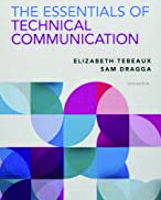By Jackie Damrau, Editor
Books Reviewed in This Issue
The reviews provided here are those that are self-selected by the reviewers from a provided list of available titles over a specific date range. Want to become a book reviewer? Contact Dr. Jackie Damrau at jdamrau3@gmail.com for more information.
A Math-Based Writing System for Engineers: Sentence Algebra & Document Algorithms
by Brad Henderson
Make It Clear: Speak and Write to Persuade and Inform
by Patrick Henry Winston
A History of Arab Graphic Design
by Bahia Shehab and Haytham Nawar
On the Offensive: Prejudice in Language Past & Present
by Karen Stollznow
The Cambridge Introduction to Narrative, 3rd ed.
by Porter Abbott
by Val Swisher and Regina Lynn Preciado
Better Data Visualizations: A Guide for Scholars, Researchers, and Wonks
by Jonathan Schwabish
Colourworks: Chromatic Innovation In Modern French Poetry and Art Writing
by Susan Harrow
by Susan Manning and Kevin E Johnson
The Myth of Multitasking: How “Doing It All” Gets Nothing Done, 2nd ed.
by Dave Crenshaw
The Invention of Medicine: From Homer to Hippocrates
by Robin Lane Fox
The Environment: A History of the Idea
by Paul Warde, Libby Robin, and Sverker Sörlin
by Youlan Tao, Min Xie, Quan Zhou, Xiaoli Li, Shaowu Cheng
Liberating Economics: Feminist Perspectives on Families, Work, and Globalization, 2nd ed.
by Drucilla K. Barker, Suzanne Bergeron, and Susan F. Feiner
Dysfunctional Documents: A 12-Step Recovery Program for User Documentation
by Kurt Ament
Mid-Century Modern Women in the Visual Arts
by Gloria Fowler, ed.
Understanding Clinical Papers, 4th ed.
by David Bowers, Allan House, David Owens, and Bridgette Bewick
A Math-Based Writing System for Engineers: Sentence Algebra & Document Algorithms
Brad Henderson. 2020. Springer. [ISBN 978-3-030-10754-3. 365 pages, including index. US$119.99 (hardcover).]
 English grammar and writing skills can be difficult to learn—and even more challenging to follow. For the engineer, mathematician, or scientist who is more familiar with mathematic formulas than grammar rules, Brad Henderson’s A Math-Based Writing System for Engineers: Sentence Algebra & Document Algorithms unlocks the hidden patterns and codes of professional writing and translates them into algebraic expressions and algorithms. His goal for the text is simple: to provide highly technical and engineering professionals with a just-in-time resource for learning how to write professionally.
English grammar and writing skills can be difficult to learn—and even more challenging to follow. For the engineer, mathematician, or scientist who is more familiar with mathematic formulas than grammar rules, Brad Henderson’s A Math-Based Writing System for Engineers: Sentence Algebra & Document Algorithms unlocks the hidden patterns and codes of professional writing and translates them into algebraic expressions and algorithms. His goal for the text is simple: to provide highly technical and engineering professionals with a just-in-time resource for learning how to write professionally.
With a professional and educational background in engineering and writing, Henderson knows his subject matter and his audience. His examples are precise, and his explanations are thorough. In Part I, he presents a grammar primer using algebraic terms to classify common parts of speech. In Part II, Henderson shares strategies for optimizing sentence construction, building from the foundation of Part I and integrating new rules that emphasize simplicity, clarity, and style optimization. Finally, in Part III, Henderson shares five document algorithms to coach readers through writing specific professional publications—project proposals, status reports, project reports, tech briefs, and instructional job aids.
A Math-Based Writing System for Engineers has been written for engineers but could be particularly helpful in any STEM-based profession where formulas, rules, and algorithms are the cadence of daily work. Engineering students might also benefit from the approach to writing as it offers a reliable mechanism for writing grammatically correct documents and technical publications. Engineering communication instructors will find the book well organized and practically structured to support coursework in the subject area. Surprisingly, the book might also be a particularly helpful resource for ESL engineers.
Readers should be prepared for lots of algebraic variables, formulas, and algorithms. The text is not written for those suffering from arithmophobia. But for those seeking formulas and patterns to complex grammar rules that can be used to write effective, efficient documentation, this text delivers.
Throughout A Math-Based Writing System for Engineers, Henderson offers practical, strategic writing advice for writing clearly and concisely in a variety of formats. His approach to formulating grammar rules into mathematical expressions and algorithms will serve engineering audiences particularly well.
Jennifer Goode
Jennifer Goode is a senior STC member and teaches technical communication at Mercer University, where she directs the online master’s program in technical communication management. With professional experience in government, non-profits, and for-profits, she also consults in instructional design, e-learning, strategic human capital performance, measurement, and improvement.
Make It Clear: Speak and Write to Persuade and Inform
Patrick Henry Winston. 2020. The MIT Press. [ISBN 978-0-262-53938-8. 338 pages, including index. US$34.95 (softcover).]
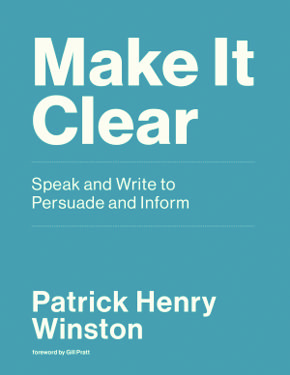 “Essentials of Being Remembered” is one of the memorable chapters in Make It Clear: Speak and Write to Persuade and Inform. This chapter is an example of how Patrick Winston has a fresh take on the basics of writing to persuade and inform in this handsome tome.
“Essentials of Being Remembered” is one of the memorable chapters in Make It Clear: Speak and Write to Persuade and Inform. This chapter is an example of how Patrick Winston has a fresh take on the basics of writing to persuade and inform in this handsome tome.
For writing to be remembered, the author argues that a writer should use Winston’s star to include surprise, symbol, story, slogan, and saliency (p. 21). So, to remember this review, consider the surprise to be the use of Winston’s star in the review. The symbol is the cover of Make It Clear. The story is that the author was a much-remembered professor at MIT (teaching for four decades). The slogan would be that making writing to be remembered is a great goal. Saliency would be that Make It Clear would be a great choice for teachers to use in a class and anyone interested in good writing.
The scope of Make It Clear is impressive. It covers both how to write and speak to get ideas across. This includes covering how to organize thoughts and how to approach writing and rewriting. It even covers how to choose an effective type and how to prepare great presentation slides. Winston even covers topics such as defeating writer’s block.
Judge for yourself if you think Winston does a good job of explaining about a choice of fonts when he says, “Type aficionados argue about whether serif or sans serif type families are more readable. On slides, there should be so few words and the size should be so large that readability is not an issue with any of the popular choices” (p. 242). I actually like what Winston has to say here.
Jeanette Evans
Jeanette Evans is an STC Associate Fellow; active in the Ohio STC community, currently serving on the newsletter committee; and co-author of an Intercom column on emerging technologies in education. She holds an MS in technical communication management from Mercer University.
A History of Arab Graphic Design
Bahia Shehab and Haytham Nawar. 2020. The American University in Cairo Press. [ISBN 978-977-416-891-8. 384 pages, including index. US$49.95 (softcover).]
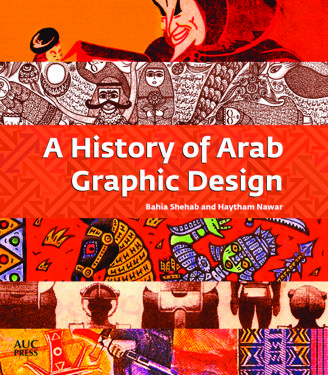 A History of Arab Graphic Design is a groundbreaking publication, one of the first English language accounts of a non-western history of graphic design, written by Bahia Shehab and Haytham Nawar, professors at The American University of Cairo. It explores the history of graphic design in Arab regions of the world and by Arab designers working in the diaspora. The breadth of time and geography which this book covers is a major undertaking. The authors acknowledge the limitations of their book, which include lack of archived materials, extensive political turmoil in many of the regions covered, and the difficulties gaining permissions to use work on the publication, a common issue in producing historical books about art and design. Despite these limitations, the book is a successful undertaking and, as a first edition, we can hope for future editions with advancements in this valuable historical research.
A History of Arab Graphic Design is a groundbreaking publication, one of the first English language accounts of a non-western history of graphic design, written by Bahia Shehab and Haytham Nawar, professors at The American University of Cairo. It explores the history of graphic design in Arab regions of the world and by Arab designers working in the diaspora. The breadth of time and geography which this book covers is a major undertaking. The authors acknowledge the limitations of their book, which include lack of archived materials, extensive political turmoil in many of the regions covered, and the difficulties gaining permissions to use work on the publication, a common issue in producing historical books about art and design. Despite these limitations, the book is a successful undertaking and, as a first edition, we can hope for future editions with advancements in this valuable historical research.
The history examines the work of influential designers, the impact of technology, and educational institutions, and focuses mainly on design history after 1900, where most of the development of modern Arab graphic design practice begins. However, the authors still examine the roots of design including the development of Islamic ornaments, vegetal and geometric, as well as calligraphy and connections to the Islamic faith. The authors also acknowledge a strong influence from western design practices stemming colonial pasts and Arab designers in the diaspora. Many of the designers included were educated in the west and returned home to educate new generations of designers, resulting in schools that are described as “emulating western educational systems” (p. 44).
The authors also show a strong connection to technology and advancements in design; interestingly some significant advancements in western culture, such as the development of the printing press, is less meaningful in Arab culture, as the calligraphic writing styles were difficult to adapt to printing technologies such as letterpress, Linotype, and typewriters. It is interesting to note that dry rub transfer letters had a substantial impact on Arab graphic design due to the ease of use without compromising Arabic scripts, whereas Letraset is a mere footnote in most western design histories. The authors also show a distinct connection between calligraphy and the history of graphic design throughout the book, even modern practices are a balance of calligraphy and design.
A History of Arab Graphic Design is filled with exquisite examples and is worth buying for the images alone, but of course a better appreciation for the work and the contexts in which they were created is gained by reading the rich history that accompanies the images. Some of the most moving examples are from the Palestinian resistance, but without context these would be significantly less poignant. It is a survey of Arab history, and like many surveys it skims many topics leaving the reader wanting more details, but that is the nature of surveys. A work of this nature is a major undertaking and should be regarded as a foundation, though an excellent one, that will hopefully be built on in the future.
Amanda Horton
Amanda Horton holds an MFA in Design and currently teaches graduate and undergraduate courses at the University of Central Oklahoma (UCO) in the areas of design history, theory, and criticism. She is also the director of the Design History Minor at UCO.
On the Offensive: Prejudice in Language Past & Present
Karen Stollznow. 2020. Cambridge University Press. [ISBN 978-1-108-79178-6. 322 pages, including index. US$15.95 (softcover).]
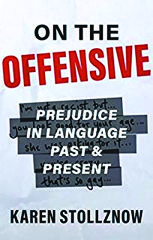 For some people, language is a minefield, especially regarding what is considered offensive. Although there are times when using a particular term to hurt or assert power over someone is intentional, there are just as many times (if not more) when offending someone is unintentional and results from not knowing, or understanding, how language influences people and their lives. Karen Stollznow’s On the Offensive: Prejudice in Language Past & Present aims to answer the questions “‘What is offensive?’ and ‘Why is that offensive?’” (p. 7) so that readers may understand and empathize with the “life experiences and challenges of other people, through the lens of language” (p. 10).
For some people, language is a minefield, especially regarding what is considered offensive. Although there are times when using a particular term to hurt or assert power over someone is intentional, there are just as many times (if not more) when offending someone is unintentional and results from not knowing, or understanding, how language influences people and their lives. Karen Stollznow’s On the Offensive: Prejudice in Language Past & Present aims to answer the questions “‘What is offensive?’ and ‘Why is that offensive?’” (p. 7) so that readers may understand and empathize with the “life experiences and challenges of other people, through the lens of language” (p. 10).
To say that this book is packed with information is an understatement. Stollznow has a lot of territory to cover when it comes to offensive language, and although she claims the book is not a comprehensive catalog, she covers an array of topics, such as race, gender, sex, religion, mental wellness, physical looks, and age. What may surprise readers is how complex each of these topics can get. For instance, when reading about physical looks, the topic is not just about attractive versus unattractive. She begins by explaining how “human oddities” were exploited by showmen like P.T. Barnum, and how people who have characteristics that sometimes stand out are still very much discriminated against today, but then she delves into height, physical differences, physical disability, the equation of beauty to goodness and ugliness to badness, transformation (ugly duckling metaphor), beauty in Hollywood, weight, clothing, hair color, and so much more. Each chapter is packed with information on what words or phrases are offensive, why they are offensive, and most important, acceptable, unoffensive, alternatives, and why they are preferred terms now.
Even though Stollznow is clear that this book “is not about censoring language” (p. 6), I must admit that I was overwhelmed by all the words and phrases that are offensive. And even though she offered alternatives, it was tough to keep track of what is offensive, which could lead to the question: What can you say today that is not offensive? Too much of the answer to that question comes in the Conclusion, unfortunately, which I think would work better if readers encountered it upfront. For instance, she explains that this book is meant to provide information about how language evolves, give readers more choices, and raise “awareness of prejudice in language” by “standing outside of ourselves and considering the world from the point of view of someone who is different to us” (p. 252). If that context was provided in the beginning, then readers might not enter the book from a “me” perspective but rather from the viewpoint of people on the receiving end of those words and phrases. On the Offensive is, however, an excellent read and resource on one of the most important subjects in our society.
Diane Martinez
Diane Martinez is an associate professor of English at Western Carolina University where she teaches technical and professional writing. She previously worked as a technical writer in engineering, an online writing instructor, and an online writing center specialist. She has been with STC since 2005.
The Cambridge Introduction to Narrative
- Porter Abbott. 2021. 3rd ed. Cambridge University Press. [ISBN 978-1-108-82335-7. 292 pages, including index. US$29.99 (softcover).]
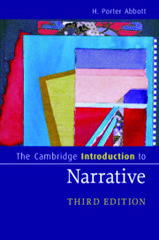 Presenting itself as “a foundational book” (p. xvii), H. Porter Abbott’s updated The Cambridge Introduction to Narrative is comprehensive, detailed, authoritative, and accessibly written. It ranges across literature, film, drama, digital narratives, and video games; is organized in a systematic, usable way; and offers an excellent glossary and bibliography—a resource valuable to student and teacher alike.
Presenting itself as “a foundational book” (p. xvii), H. Porter Abbott’s updated The Cambridge Introduction to Narrative is comprehensive, detailed, authoritative, and accessibly written. It ranges across literature, film, drama, digital narratives, and video games; is organized in a systematic, usable way; and offers an excellent glossary and bibliography—a resource valuable to student and teacher alike.
As Porter explains, story and narrative are related yet different. Story is a “chronological sequence of events involving entities” such as “acts and happenings” and “characters” (p. 261). Narrative is “the representation of an event or a series of events,” the “telling of a story” (pp. 12, 256). Paradoxically, only through narrative can the story itself, the actual events described by the narrative, be inferred. Narrative therefore appears to be a fundamental human characteristic that mediates how we understand the world.
As representation, narrative can disrupt the strict chronology of story (flashbacks) or connect elements in non-sequential ways (motifs). Narrative is in effect “infinitely malleable” (p. 16) and controllable by the representer, or narrator, who may or may not be part of the action represented. Narrative creates an arc of expectation and fulfillment, a form, that repeats the fundamental human experience of time as having a beginning, middle, and end. However localized a narrative may be, it ultimately repeats the structure of “masterplots” or archetypes, such as the hero’s journey, that appear universal in human experience (pp. 52–56, 254–255), and that reflect time’s linearity.
Narrative also evokes spatial dimensions: “action makes space” (p. 169). In Bakhtin’s terms, narrative “thickens” time by involving space, creating a “chronotope,” or compression of time and space into space-time, where one cannot exist without the other (p. 171). Narrating a story, we are “acquiring a picture” (p. 171). Looking at a picture, “narrative templates in our minds” explain what it depicts (p. 8).
Narratives, however, are “by their very nature . . riddled with gaps” (p. 96). Narratives can suddenly deviate into a backstory, skip over intermediate events into future situations, or juxtapose disparate settings to create a sense of simultaneity. Such gaps compel interpretation from the reader or viewer and make explicit the construction of time inherent to narrative. Gaps occur even in scientific narratives, in exceptions to the evidence that invite speculation: “Facts, in short, don’t speak for themselves. They must be interpreted” (p. 161).
The inability of even scientific narrative to coincide exactly with the world it describes implies a distinction between narrative “closure” and “ending”. Closure occurs when the expectations raised by the action are fulfilled; ending when readers believe all questions raised by the narrative have been answered. Especially in literature, but also inevitably in science, expectations may be adequately fulfilled while questions always remain. Given such an important role in the quest for understanding, narrative deserves serious study, and Abbott’s book offers an excellent place to start.
Donald R. Riccomini
Donald R. Riccomini is an STC member and Emeritus Senior Lecturer in English at Santa Clara University, where he specialized in engineering and technical communications. He previously spent twenty-three years in high technology as a technical writer, engineer, manager, and director in semiconductors, instrumentation, and server development.
The Personalization Paradox: Why Companies Fail (and How to Succeed) at Delivering Personalized Experiences at Scale
Val Swisher and Regina Lynn Preciado. 2021. XML Press. [ISBN 978-1-937434-72-4. 228 pages, including index. US$39.95 (softcover).]
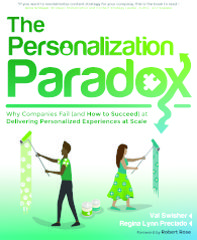 The Personalization Paradox: Why Companies Fail (and How to Succeed) at Delivering Personalized Experiences at Scale is a book that every content strategist will want to have in their reference library. Val Swisher and Regina Lynn Preciado provide a very structured, to-the-point discussion on personalization at scale. The back cover states, “The only way to deliver personalized experiences at scale is to standardize your content. That’s right: standardization enables personalization. We call this brain-twister The Personalization Paradox.”
The Personalization Paradox: Why Companies Fail (and How to Succeed) at Delivering Personalized Experiences at Scale is a book that every content strategist will want to have in their reference library. Val Swisher and Regina Lynn Preciado provide a very structured, to-the-point discussion on personalization at scale. The back cover states, “The only way to deliver personalized experiences at scale is to standardize your content. That’s right: standardization enables personalization. We call this brain-twister The Personalization Paradox.”
Personalization at scale is delivering “the right content to the right person at the right time on the right device in the language [of] their choosing” (p. ix) Delivering personalization can be done in a manual way, where “you create, manage, store, update, and retire different content for each person, persona, or customer type” (p. ix), or in an automated way, where you use sophisticated tools to try to match the content to the customer. Personalization fails because we focus on the content delivery not the content creation and management; we invest in tools and systems without transforming the content; and we do not look at it holistically as we tend to trap the content in silos within our companies.
The authors say, “Historically, we were taught to create content by starting at “page 1” and writing to the end of the asset” (p. xi). With personalization, the authors tell us to “create and use small, nimble chunks of content … that can be combined in different ways for different people and different devices, you must standardize everything about that content: the words and images you use, the ways in which you use those words, the paragraphs and sets of paragraphs, and the overall tone and voice” (p. xi). These small content chunks are content components that apply well to content reuse easily wherever needed to match the content to the customer.
Content reuse requires setting up a strategy before starting. It is “not the same as copy, paste, tweak (CPT). You cannot use copy, paste, tweak to deliver personalization at scale” (pp. 129, 132). A good reuse strategy defines granularity (the smallest content piece for reuse), matrix (where the content will be reused), management (where you will reuse it), and governance (who can create, modify, or retire the reused content).
The authors state, “You must standardize your content first and manage it in a standardized content ecosystem. You cannot simply apply personalization to the end product and expect positive results” (p. 173). Content ecosystems include a “component content management system (CCMS), digital asset manager (DAM), and a personalized content delivery platform” (pp. 173–174).
Throughout The Personalization Paradox, you will find the chapters include real world experiences in which the authors have worked as well as quotes from other industry leaders who currently work in the structured content area.
Jackie Damrau
Jackie Damrau is an STC Fellow and serves as the book review editor for Technical Communication. She has more than 25 years of technical communication experience and works for a professional consulting organization as a senior business analyst. Jackie loves reading mysteries and historical fiction.
Better Data Visualizations: A Guide for Scholars, Researchers, and Wonks
Jonathan Schwabish. 2021. Columbia University Press. [ISBN 978-0-231-19311-5. 450 pages, including index. US$28.95 (softcover).]
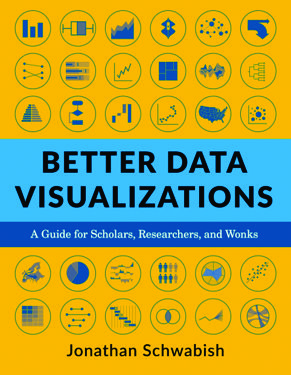 When Better Data Visualizations: A Guide for Scholars, Researchers, and Wonks arrived, I immediately thumbed through it, excited to read it. If you think creating charts of data isn’t interesting, perhaps you need to read this wonderful, full-color book. Not only is the book well designed from fonts to white space, it’s also well written and enjoyable to read. I even laughed a few times at some of the examples, including one from Alberto Cairo, an academic who “drew a dinosaur with points in a scatterplot” (p. 256) complete with an image of said dinosaur. Besides being entertaining, this book is a must for students who have to learn data visualization and instructors who teach the subject—plus any professional who puts data into images.
When Better Data Visualizations: A Guide for Scholars, Researchers, and Wonks arrived, I immediately thumbed through it, excited to read it. If you think creating charts of data isn’t interesting, perhaps you need to read this wonderful, full-color book. Not only is the book well designed from fonts to white space, it’s also well written and enjoyable to read. I even laughed a few times at some of the examples, including one from Alberto Cairo, an academic who “drew a dinosaur with points in a scatterplot” (p. 256) complete with an image of said dinosaur. Besides being entertaining, this book is a must for students who have to learn data visualization and instructors who teach the subject—plus any professional who puts data into images.
Better Data Visualizations contains three parts. The first part, “Principles of data visualization,” has three chapters that cover visual processing, five guidelines to follow, and—something taught in all writing courses—audience analysis. One gem is a two-page breakdown of data types (p. 46) that should be an exemplar in technical communication courses to illustrate how to explain complicated topics using analogies and following a classification structure. Part one alone is a concise series of lessons that help you think about your data and classify it in such a way that you’ll know how best to present it to your audience.
Part two, by far the largest section, is an encyclopedia of chart types organized by the goal (or function) of the chart. Types range from the obvious (changes over time) to the complicated (azimuthal projection maps). One interesting example is a Sankey diagram showing how “fifty-two students tried to spell” camouflage, starting with all students getting the C right but then diverging into eleven different results (p. 126). Part two ends with an elegant lesson on formatting tables for visual effect. Every reader is bound to learn from the many examples here.
Many technical communicators will appreciate that the last part of this book includes a chapter on creating a style guide for charts, including fonts, colors, labels, and so on. The text also instructs readers on subjects like choosing colors appropriate for those with color vision deficiency.
Better Data Visualizations ends with “lessons learned” and includes a brief appendix on tools to create charts, another appendix with further readings, a list of references, and a thorough index—one that I appreciated particularly as a reference to famous examples of data visualizations. For example, I noted John Snow, the British doctor who tracked cholera in London by mapping the cases as clusters (in what I learned is called a Voronoi diagram) to pinpoint a particular contaminated water pump. Not only are the over 500 examples instructive in teaching the type of visualization being presented, but most of them are also real-world examples that in themselves make valuable history lessons.
If you read this text and follow its guidelines, you’ll be able to effectively present your data—and you might enjoy the process like I did.
Kelly A. Harrison
Kelly A. Harrison, MFA, teaches technical communication at Stanford University. Formerly, she taught a range of writing courses at San José State University and wrote for various high-tech companies. Kelly is the Associate Editor for West Trade Review.
Colourworks: Chromatic Innovation In Modern French Poetry and Art Writing
Susan Harrow. 2020. Bloomsbury Visual Arts. [ISBN 978-1-350-18220-2. 238 pages, including index. US$115.00 (hardcover).]
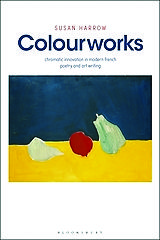 Colourworks: Chromatic Innovation In Modern French Poetry and Art Writing by Susan Harrow is an immersive book analyzing color in modern French poetry and art writing. A Professor of French at the University of Bristol, Harrow’s monograph is based on her research interests at the intersection of French poetry and visual culture. Written in three parts, Harrow uses the poetry and art writing of three canonical figures of modernist French poetry including Mallarmé, Valéry, and Bonnefoy to address questions about readers’ response and the textual life of color in the writing. Modern French poetry is self-explanatory but perhaps art writing is not, Harrow includes any prose written from these poets that is in response to art, whether contemporary or historic.
Colourworks: Chromatic Innovation In Modern French Poetry and Art Writing by Susan Harrow is an immersive book analyzing color in modern French poetry and art writing. A Professor of French at the University of Bristol, Harrow’s monograph is based on her research interests at the intersection of French poetry and visual culture. Written in three parts, Harrow uses the poetry and art writing of three canonical figures of modernist French poetry including Mallarmé, Valéry, and Bonnefoy to address questions about readers’ response and the textual life of color in the writing. Modern French poetry is self-explanatory but perhaps art writing is not, Harrow includes any prose written from these poets that is in response to art, whether contemporary or historic.
In Part 1 of Colourworks, Harrow begins by examining the works of Mallarmé as the establishment of modernist poetry. She discusses Mallarmé’s work through distinct examinations of black, blue, and white as well as through his connections to the impressionist artist Manet. Part 2 covers an analysis of Valéry with a deeper look at color in sections that approach the use of “carroty-red” in Valéry’s writing as well as his use of Chiaroscuro, which is interesting to think of Chiaroscuro, a common technique in painting that contrasts light and shadow in the same composition, as used in poetry. But probably the most interesting analysis in part 2 is the use of Ekphrasis, which Harrow explains as, “To read a poem in ekphrastic terms through a painting which is not an actual source for the poet, but an analogue of that poem” (p. 105) Finally, part 3 examines the writing of Bonnefoy about grey and white, but also ethics and ekphrastics.
The author’s use of ekphrasis to analyze the writing of Valéry and Bonnefoy remind the reader that the analysis of both painting and poetry is subjective. Harrow’s deep interest in and knowledge of poetry is evident in her own expressive writing style. Colourworks is filled with vivid descriptions such as when she describes Mallarmé as “Awakening to the mesmeric power of fractured colour in the modernist work” (p. 29). Perhaps one of her best descriptions of color, from the section on Mallarmé, is on the work of Baudelaire, in which Harrow states, “Already for Baudelaire, black was the colour of the century, synonymous with the rise of the bourgeoisie—with its strait jacketed hegemony” (p. 41).
Colourworks is for a very distinct academic audience of French studies, yet there is interdisciplinary crossover of poetry and visual culture. The reading requires a familiarity with the works analyzed, as the longer form poems are not included in their entirety and requires a good working knowledge of the French language; only longer passages are translated; and the book contains a fair number of citations in the body in the original language untranslated. The writing is dense at times but always maintains its own poetic air.
Amanda Horton
Amanda Horton holds an MFA in Design and currently teaches graduate and undergraduate courses at the University of Central Oklahoma (UCO) in the areas of design history, theory, and criticism. She is also the director of the Design History Minor at UCO.
Online Learning for Dummies
Susan Manning and Kevin E Johnson. 2021. John Wiley & Sons Inc. [ISBN 978-1-119-75686-6. 394 pages. US$24.99 (softcover).]
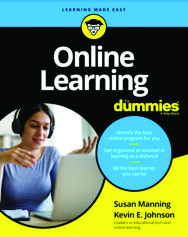 If you have recently been tapped by a college to share your expertise, regarding technical communication or even a unique hobby, the class you teach is likely online. Never fear. All you need to know of the basics, what’s necessary to work professionally, and pointers to the latest information is available in Online Learning for Dummies.
If you have recently been tapped by a college to share your expertise, regarding technical communication or even a unique hobby, the class you teach is likely online. Never fear. All you need to know of the basics, what’s necessary to work professionally, and pointers to the latest information is available in Online Learning for Dummies.
Each author has credentialed knowledge in their separate spheres: Manning oversees design for client Learning Management Systems (LMS); Johnson directs distance learning at a western state college. The Canvas LMS option demonstrated in their book is like others. An LMS provides a teacher all the tools to interact with their online students and vice versa.
I consulted a technical communication peer who has successfully shared his professional expertise in a local college-level class to prepare for this review. In Connecticut, they use Blackboard as the LMS tool. Reviewing Blackboard’s list of features for online courses was impressive. The “Assignment” feature allows downloading and then uploading completed assignments while providing the online ability to assign grades. Other features allow collaboration in break out rooms with interactive white boards, a course calendar for students to set class times and reminders, and many tools to organize teachers. Schools provide online training for their specific LMS.
This For Dummies book does not automatically assume you are an expert with computers, so don’t worry. Needed basics, from keyboards to hot keys, are added at exactly the right points. Guessing that your expertise is greater than average, feel free to skim or bypass entry-level sections.
If you are new to the institutional environment, you will appreciate content that gets you up to speed on facets of college life. Commonly known events are Orientation and tours; less known is the difference between models: the historic (independent) vs. cohort model (where students in a degree program all start together then veer off for optional choices to later return and graduate with the main group). Having time-saving tips, grading rubrics, and a wealth of other information stored in lists at the fingertips of a new professor, will soon make you an expert.
As the instructor, you will want to encourage students to interact with you and other students. LMS tools make it possible to provide for disability requirements. For example, advanced notice is needed by the instructor to arrange in-class sign-language translation for a hearing-impaired student. Gender identity can be quietly discovered by other classmates in their choice of pronouns used in sign-ins. This book is full of advice on manners, which is so important when people never meet in person but need to collaborate.
Media can be used when submitting assignments. Video and voice recordings can demonstrate a topic or be used to show how well the student handles a different language.
Online Learning for Dummies also includes helpful information regarding homeschooling online due to the 2020 pandemic. Although Zoom is the tool primarily used to teach the K-12 group, do not expect to learn that functionality in this book.
Donna Ford
Donna Ford has been an STC member and a technical writer in the hardware, software, and government healthcare industries. She holds an Information Design certificate from Bentley College. Donna is an author who also reviews books online for the US Review of Books.
The Myth of Multitasking: How “Doing It All” Gets Nothing Done
Dave Crenshaw. 2021. 2nd ed. Mango Publishing Group. [ISBN 978-1-64250-505-4. 160 pages. US$19.95 (hardcover).]
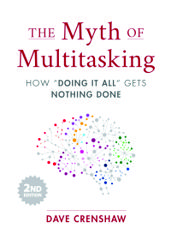 Dave Crenshaw uses a reader-friendly, story format to communicate the message in his book, The Myth of Multitasking: How “Doing It All” Gets Nothing Done. The story features a consultant who helps a stressed CEO improve her company’s productivity. As the story progresses, the CEO (and readers) assess multitasking’s negative impact on their work and personal lives and learn practical steps to avoid multitasking, thereby improving their productivity and well-being.
Dave Crenshaw uses a reader-friendly, story format to communicate the message in his book, The Myth of Multitasking: How “Doing It All” Gets Nothing Done. The story features a consultant who helps a stressed CEO improve her company’s productivity. As the story progresses, the CEO (and readers) assess multitasking’s negative impact on their work and personal lives and learn practical steps to avoid multitasking, thereby improving their productivity and well-being.
Crenshaw challenges the “myth” that people can multitask. He feels that what many people call multitasking––to use his own term––is actually “switchtasking.” Rather than performing two activities at once, our brains are switching quickly between the tasks. Since a person is interrupting a task to move to another activity, there is a loss in concentration. Rather than making a person more productive, multitasking is actually inefficient. I found his categorization of switchtasking into active (those you initiate) and passive (“caused by someone or something other than you”) designations a helpful tool in managing multitasking (p. 34). An example of the former is switching from a task to speak to someone while a common example of the latter is receiving text mail notifications.
The Myth of Multitasking is a good introduction to an activity that is unfortunately a part of many people’s lives. Crenshaw also provides a fresh perspective on multi-tasking so people already familiar with the topic will find his insights helpful. For example, we are acquainted with multi-tasking’s negative impact on our time and productivity, but Crenshaw asserts that it also negatively affects our relationship with others. If someone is speaking and we are multi-tasking and distracted, we are relaying a message that we think that the person is not important enough to receive our full attention.
The book’s content applies to managers and those who do not have direct reports. Crenshaw’s discussion of multi-tasking as part of an organization’s culture (“…a business is a reflection of its leadership”) was enlightening (p. 13). He advises leaders to fix their personal systems before rolling out multitasking training to change business systems. A personal system is “… how you operate as one person: how you manage email and voicemail … your workspace or office organization … and so on” (p. 113), while a business system reflects an organization’s processes and how employees communicate and manage things internally.
The Myth of Multitasking is a fast read due to its small size (5 x 7.5 inches), it is a good choice as a department or book club group reading. The book contains exercises with step-by step instructions and worksheets (including a link to download) to assist readers in understanding multitasking’s impact on their lives and managing their time.
Ann Marie Queeney
Ann Marie Queeney is an STC senior member with more than 20 years’ technical communication experience primarily in the medical device industry. Her STC experience includes serving as a Special Interest Group leader, 2020-2022 Board member, and current CAC (Communities Affairs Committee) Chair. Ann Marie is the owner of A.M. Queeney, LLC.
The Invention of Medicine: From Homer to Hippocrates
Robin Lane Fox. 2020. Basic Books. [ISBN 978-0-465-09344-1. 460 pages, including index. US$35.00. (hardcover).]
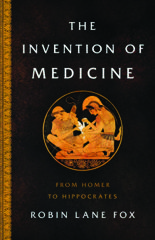 Many medical historians date the birth of modern medicine to the fifth century BCE, when Greek practitioners began producing the earliest known medical texts (p. 24). As technical writers, the use of writing as evidence of practice should not surprise us. However, Robin Lane Fox, author of The Invention of Modern Medicine: From Homer to Hippocrates, assures us that the invention of modern medicine, and even medical writing and communication, did not emerge from such a singular point in time. Rather, it was influenced by many cultures and practitioners.
Many medical historians date the birth of modern medicine to the fifth century BCE, when Greek practitioners began producing the earliest known medical texts (p. 24). As technical writers, the use of writing as evidence of practice should not surprise us. However, Robin Lane Fox, author of The Invention of Modern Medicine: From Homer to Hippocrates, assures us that the invention of modern medicine, and even medical writing and communication, did not emerge from such a singular point in time. Rather, it was influenced by many cultures and practitioners.
As a technical communicator, I found Fox’s discussion of the evolution of medical communication especially intriguing. While it is certainly true that the art of healing and communicating about medicine has origins deep in time, the ways in which we think and write about medicine did undergo a dramatic change starting with the Greek philosophers. Throughout The Invention of Medicine, Fox traces the evolution of modern thought and communication about medicine. For example, the discussion of the differences between medical knowledge and traditional beliefs, the use of the first-person “I” in scientific texts, and even instructions and cookbooks may all trace their development to the fifth century BCE in Greece (p. 24).
Fox draws upon a rich variety of examples from art, literature, and medical texts to illustrate her discussion of the practice of medicine across the ancient world. One of the most recognizable references is to Homer’s Iliad, in which many highly specific anatomical references and descriptions of medical injuries are made, illustrating the extensive understanding of the human anatomy that the Greeks possessed as early as the seventh century BCE. However, ancient myths such as the Greek myth of Dawn and Tithonus are examined as well to discuss the ancient Greeks’ views on aging, sex, and more (p. 58).
No book about medicine or even medical communication would be complete without illustrations. However, you won’t find modern line drawings of the inner workings of the human body in this book. The final chapter of The Invention of Medicine is dedicated to a discussion of art depicting medical topics, featuring high-resolution color photographs of ancient medical texts, as well as paintings and reliefs depicting medical scenes and stories.
The Invention of Medicine is a deeply satisfying read for technical writing practitioners and scholars alike who share an interest in the origins of scientific and medical writing. Lane’s writing is engaging and informative without weighing the reader down with copious footnotes and involved discussions of medical or communication theory. As a result, many in the technical communication field at all levels of expertise, from advanced undergraduate student to seasoned practitioner, would enjoy this book.
Nicole St. Germaine
Nicole St. Germaine is a Professor in the Technical and Business Writing Program at Angelo State University, as well as a freelance writer and consultant. Her research interests include technical communication for a Mexican American audience and technical communication in the health fields.
The Environment: A History of the Idea
Paul Warde, Libby Robin, and Sverker Sörlin. 2021. John Hopkins University Press [ISBN 978-1-4214-4002-6. 244 pages, including index. US$24.95 (softcover).]
 The word “environment” connotes representations of nature, climate change, the biosphere, individual flora and fauna, and much more, but the idea of the environment is not universal, and it is a word, a concept, that has had a relatively short but complex history. The environment is also the subject of much global conversation about the past, present, and future of humanity and Earth. The Environment: A History of the Idea is a timely read that provides a new perspective on the evolution of the environment, as a word, as a concept, as the subject of humanity’s survival in the years to come.
The word “environment” connotes representations of nature, climate change, the biosphere, individual flora and fauna, and much more, but the idea of the environment is not universal, and it is a word, a concept, that has had a relatively short but complex history. The environment is also the subject of much global conversation about the past, present, and future of humanity and Earth. The Environment: A History of the Idea is a timely read that provides a new perspective on the evolution of the environment, as a word, as a concept, as the subject of humanity’s survival in the years to come.
The book is comprehensive and compelling in that it takes a seemingly common term and traces its evolution from when it was “borrowed from French into English in 1827” (p. 27) by Thomas Carlyle to the word as we know it today, a politically charged concept that has “become a way to visualize, rather than imagine, the future” (p. 179). The Environment is focused on the environment and not environmentalism as a social action. The authors are thorough in their research that takes readers on an evolutionary journey of the word and the idea through the post-World War II years when there was focus on global reconstruction and exploitation of natural resources.. It was also at this time when the first environmental organizations were born, some that were concerned with conservation and others that sought ways to “squeeze more wealth out of nature” (p. 40). In the 1970s, the environment took on other meanings as scientists learned how to model Earth’s natural processes and use those models to make predictions. Modeling and predictions led naturally to thinking of the environment in terms of how it should be regulated and governed, which opened the door to political conversations and governmental policies. In the 1980s, climate entered the realm of what was then considered the environment, and new perspectives about humanity’s role in the environment brought about theories such as Earth System Science and Gaia Theory. The science behind the environment, however, could not be cordoned off to any field of science any more than one country could regulate how the environment should be used.
Even though the word environment was first used in American literature in 1827, over a century passed before it became a mainstream concept, so its history is only about 70 years old. But in that 70 years, the concept has evolved into the one word that now connotes the future of humanity. The Environment provides an enlightening discussion about the evolution of the idea and the many perspectives about this concept that have profound consequences for the future. Any student in the sciences, humanities, business, or economics would do themselves and the world a service to read this book and consider the history and evolution of this word and the consequences of its meaning in terms of our future.
Diane Martinez
Diane Martinez is an STC member and an associate professor of English at Western Carolina University where she teaches technical and professional writing. She previously worked as a technical writer in engineering, an online writing instructor, and an online writing center specialist.
Becoming a Technical Writer
Youlan Tao, Min Xie, Quan Zhou, Xiaoli Li, Shaowu Cheng. 2020. Fudan University Press. [ISBN 9787-309-15253-1. 245 pages, including index. US$6.06 (softcover).]
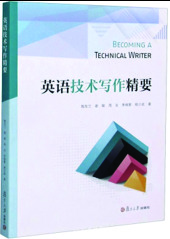 In China, the past two decades has witnessed the burgeoning field of technical communication and the increasing demand for trained graduates from college. Although China does not have an independent academic degree program in technical writing yet (pp. 43-44), some leading universities have offered regular courses, mainly to students in the MTI (Master of Translation and Interpreting) programs to develop their technical translation capabilities. One of the urgent problems with the current curriculum is no local textbooks written for Chinese students. Becoming a Technical Writer is the first English-written textbook that has been published in China. It was jointly created by Chinese scholars, Chinese American scholars, and Chinese professionals in technical communication and translation. Although it mainly targets MTI students, professionals in technical communication and/or technical translation will find it useful.
In China, the past two decades has witnessed the burgeoning field of technical communication and the increasing demand for trained graduates from college. Although China does not have an independent academic degree program in technical writing yet (pp. 43-44), some leading universities have offered regular courses, mainly to students in the MTI (Master of Translation and Interpreting) programs to develop their technical translation capabilities. One of the urgent problems with the current curriculum is no local textbooks written for Chinese students. Becoming a Technical Writer is the first English-written textbook that has been published in China. It was jointly created by Chinese scholars, Chinese American scholars, and Chinese professionals in technical communication and translation. Although it mainly targets MTI students, professionals in technical communication and/or technical translation will find it useful.
This book contains five chapters. The introduction outlines the environment of technical communication in China, pointing out “technical writer” as a profession is “on its way [to] being recognized” by society (p. 38). The next four chapters are organized surrounding the four process stages of technical writing: planning, developing, revising, and delivering.
The Planning chapter narrates four steps for effective planning: analyzing users and contexts, conducting research, organizing content, and determining output formats. To meet the reader’s need of writing interactive, online contents such as help messages or chatbot assistance, this book recommends a “progressive disclosure” (such as a set of momentary help, extended help, and full help) organization to realize customized, embedded, and effortless on-screen instructions.
In the Developing chapter, the authors cover key aspects in writing technical documents, including controlled language, style guides, structured writing, and authoring tools. Learning these aspects satisfies the MTI students’ interest in writing for machine translation or for a global audience. This chapter also has a section about technical illustrations—the design principles, types, and how to work with them, a topic that translators need to know if they want to become technical writers.
The next chapter, Revising, details the types (phases) of reviewing technical documents, the complete process of usability testing, and the stages of technical editing.
Finally, the last chapter, Delivering, focuses on user feedback collection, document publishing, and document distribution. The authors point out that publishing and distribution is not the end for a technical document; instead, a technical writer should analyze the users’ feedback to improve the technical documents or the product itself. Doing so reminds the readers that technical writing is user centered.
As the first comprehensive, English-written technical writing textbook in China, Becoming a Technical Writer is a milestone in textbook development in technical communication education. Designed for Chinese graduate students in translation studies, this book caters to their practice of technical writing as and for translation in Chinese context. Being the first version, the book inevitably has some limitations, such as a table of contents that is too general, blurry visuals, and mechanical errors. I recommend that the authors consider adding sections with ethical discussions on technical communication, more specific guidelines about online content design, and a source book for instructors and students.
Lin Dong and Xiaozhen Liu
Lin Dong, PhD, is a lecturer who teaches Professional and Technical Writing to MTI students at the School of International Studies in the University of International Business and Economics, Beijing, China. She won the Best Paper Award at the 2020 IEEE ProComm Conference.
Xiaozhen Liu is a graduate student from the MTI program at the University of International Business and Economics. She contributed ideas from a target reader’s perspective to an early draft of this review.
Liberating Economics: Feminist Perspectives on Families, Work, and Globalization
Drucilla K. Barker, Suzanne Bergeron, and Susan F. Feiner. 2021. 2nd ed. University of Michigan Press. [ISBN 978-0-472-05473-2. 240 pages, including index. US$29.95. (softcover).]
 It is a story that many women around the world share: work one shift in the workplace, then go home to do unpaid care work, such as cooking dinner, cleaning up, and helping children do homework. Despite this “double shift,” women in developed countries have made strides toward parity when compared with previous generations (p. 1). However, Drucilla K. Barker, Suzanne Bergeron, and Susan F. Feiner assure us in Liberating Economics: Feminist Perspectives on Families, Work, and Globalization, Second Edition, that women still have work ahead of them to achieve equality in the workplace, in the global economy, and in family life.
It is a story that many women around the world share: work one shift in the workplace, then go home to do unpaid care work, such as cooking dinner, cleaning up, and helping children do homework. Despite this “double shift,” women in developed countries have made strides toward parity when compared with previous generations (p. 1). However, Drucilla K. Barker, Suzanne Bergeron, and Susan F. Feiner assure us in Liberating Economics: Feminist Perspectives on Families, Work, and Globalization, Second Edition, that women still have work ahead of them to achieve equality in the workplace, in the global economy, and in family life.
Liberating Economics is an eye-opener for any reader with only passing knowledge of how gender and economics intersect. Liberal feminism assures us that if women get an education and work hard, they will rise in the workplace meritocracy (p. 10). However, feminism and economics are inextricably interlinked and more nuanced than many readers may imagine. For example, despite Liberal Feminism’s focus on workplace equality, white women in the United States still only make USD 81.5 cents for every dollar a man makes, black women make USD 65.3 cents, and Latina women make even less (p. 1). The authors tease out the many reasons for disparities such as this one through the lenses of historical context, gender expectations, socioeconomic factors, modern workplace trends, and more.
Perhaps the greatest strength of Liberating Economics is its broad coverage of topics. Unlike most books that focus on feminism, work, and family, the authors do not solely focus on professional working women in developed countries. Instead, they cover women’s economic lives globally by discussing the effects of culture, race, sexuality, gender identification, education, among others. Barker, et al. discuss everything from the transnational caring labor of Filipinas working abroad as nannies and domestics (p. 118) to the inefficacy of microloans to lift women out of long-term poverty (p. 137).
Liberating Economics is a straightforward read without focusing overmuch on complex economic theory. An advanced undergraduate student with only basic knowledge of economics could easily follow Barker, Bergeron, and Feiner’s clear explanations and examples. Each chapter focuses on a clear theme, such as the gendered division of labor, women’s poverty, and gender and crisis economics. Each chapter builds upon the last but is so clearly explained that a reader could review a chapter or two alone without losing the thread of the discussion. I would recommend this book to any professional or student who wishes to learn more about equity in the workplace or in global economics.
Nicole St. Germaine
Nicole St. Germaine is a Professor in the Technical and Business Writing Program at Angelo State University, as well as a freelance writer and consultant. Her research interests include technical communication for a Mexican American audience and technical communication in the health fields.
Dysfunctional Documents: A 12-Step Recovery Program for User Documentation
Kurt Ament. 2021. Levels of Edit. [ISBN 978-3-00-068352-7. 113 pages, including index. US$12.95 (softcover).]
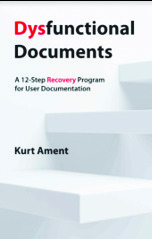 Dysfunctional Documents: A 12-Step Recovery Program for User Documentation is a delightful handbook that takes a practical, step-by-step approach to identifying and correcting the underlying problems in document sets. Kurt Ament takes his inspiration from the venerable Levels of Edit handbook, developed by Robert Van Buren and Mary Fran Buehler for Jet Propulsion Laboratories (JPL) and published by STC, and transforms the principles of editing into a 12-step recovery program.
Dysfunctional Documents: A 12-Step Recovery Program for User Documentation is a delightful handbook that takes a practical, step-by-step approach to identifying and correcting the underlying problems in document sets. Kurt Ament takes his inspiration from the venerable Levels of Edit handbook, developed by Robert Van Buren and Mary Fran Buehler for Jet Propulsion Laboratories (JPL) and published by STC, and transforms the principles of editing into a 12-step recovery program.
The first thing you’ll notice about Dysfunctional Documents is the book’s physical size. Its small page format (5 inches by 8 inches) and its thin spine seem miniscule next to traditional technical editing volumes, which tend to be hundreds of pages in length. This smaller format is a feature—not a bug—which makes Dysfunctional Documents less intimidating than other editing texts. It’s about the same size as my iPad mini, which makes it incredibly easy to slip into my bag on my way to my next class or meeting. Its price tag is also significantly smaller than many editing texts, which makes it easier to distribute to your entire team or assign as reading as part of a unit on editing in a technical communication course.
The book’s contents are equally unintimidating and easy to read. Each chapter ranges from three to seven pages and offers concise and actionable advice. Ament, a long-time writer and editor of user documentation, takes a modular approach, breaking each chapter down into manageable topics. Each chapter includes an overview that clearly lays out who is involved at each stage in the recovery process and what their responsibilities are.
The recovery process advocated by Dysfunctional Documents is methodical and practical. Each stage in the recovery process is framed as an actionable step. Concepts described in each step are clearly defined and examples bring the concepts to life. Although the book outlines specific steps toward recovery, the advice is general enough that any technical publications team can apply the advice in ways that suit their documentation libraries and their dysfunctions.
Dysfunctional Documents also includes an appendix that illustrates the types of items writers and editors should consider adding to a styles guide. If your team relies on an outdated style guide—or has no style guide at all—you can use this appendix as an example for creating or revamping your in-house style.
As I read through the book, I found myself nodding my head as I thought about how my own team has been splintered into siloed products, how problems have started cropping up since we began working remotely, and how this recovery program could be applied to my team’s document library. Dysfunctional Documents will be a useful resource for rehabilitating our vast document library.
Michael Opsteegh
Michael Opsteegh is an STC Associate Fellow and a technical writer in the software and financial services industries since 2004. He is a lecturer in the professional writing program at Cal State Long Beach. Michael holds a master’s degree in English and is a Certified Technical Professional Communicator (CPTC).
Mid-Century Modern Women in the Visual Arts
Gloria Fowler, ed. 2020. Chronicle Chroma. [ISBN 978-1-6232-6118-4. 116 pages. US$24.95 (hardcover).]
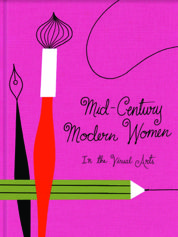 Mid-Century Modern Women in the Visual Arts is a beautifully illustrated book highlighting 25 women who made an impact on western society, mainly the U.S. and U.K., from the 1940s–1960s. The women represent a broad swath of what can be termed the visual arts, including fine artists and designers such as painters, sculptors, and ceramicists, as well as architects, interior designers, fashion designers, graphic designers, and textile designers. There is even one model included, the ever iconic Twiggy is featured alongside fashion designer Mary Quant. According to the editor Gloria Fowler, “All of the women included in this book had to overcome significant obstacles in society and their personal lives in order to pursue their dreams and realize their artistic ambitions.” (p. 1)
Mid-Century Modern Women in the Visual Arts is a beautifully illustrated book highlighting 25 women who made an impact on western society, mainly the U.S. and U.K., from the 1940s–1960s. The women represent a broad swath of what can be termed the visual arts, including fine artists and designers such as painters, sculptors, and ceramicists, as well as architects, interior designers, fashion designers, graphic designers, and textile designers. There is even one model included, the ever iconic Twiggy is featured alongside fashion designer Mary Quant. According to the editor Gloria Fowler, “All of the women included in this book had to overcome significant obstacles in society and their personal lives in order to pursue their dreams and realize their artistic ambitions.” (p. 1)
The women are presented in two spreads, one fully illustrated spread and one spread that features the women’s name and an object to represent their profession on the left, and a quote on the right. Twiggy and Mary Quant are the only individuals that share their spreads. Two things stood out here that reflect the larger issue of women and the credit they receive for their contributions.
The authors attribute the quote “Good design is good business” to Florence Knoll, a phrase that is often used to signify the embrace of design in the promotion of business in the U.S. that occurred in the mid-century era. This quote is often attributed to Thomas John Watson Jr., the CEO of IBM. Some initial research reveals that Knoll should likely get the credit having seemingly revealed this truth in a 1957 profile in the New York Times, where Watson apparently stated this in a 1966 memo. If it is true that Knoll said it first, then why does Watson get the credit.
On the other hand, the “object” chosen to represent graphic designer (and artist) Elaine Lustig Cohen appears to be a reference to a book cover design. And though she designed many books throughout her career, in this instance the illustration references the cover design for Three Lives by Gertrude Stein, which was not designed by Cohen but by her deceased husband, designer Alvin Lustig. Cohen designed so many covers, why was Lustig’s illustration chosen to represent her? This choice oddly seems to reflect the larger issue that Lustig is often cited for his many contributions to design history in textbooks, while Cohen’s are often overlooked.
This is a charming book whose quirky illustrations are reminiscent of the mid-century style. A complaint about the book is that there is so little text about the individual women, the bios are short containing roughly 100 words, and are only included at the end of the book. Mid-Century Modern Women also perhaps struggles with an identity problem, is it a children’s book or an illustrated book for adults? It seems mostly likely, due to the format, that it is intended as a book for adults, a collector’s item, but it might be better served to be slightly reformatted as a children’s book.
Amanda Horton
Amanda Horton holds an MFA in Design and currently teaches graduate and undergraduate courses at the University of Central Oklahoma (UCO) in the areas of design history, theory, and criticism. She is also the director of the Design History Minor at UCO.
Understanding Clinical Papers
David Bowers, Allan House, David Owens, and Bridgette Bewick. 2021. 4th ed. Wiley Blackwell. [ISBN 978-1-119-57316-6. 290 pages, including index. US$50.00 (softcover).]
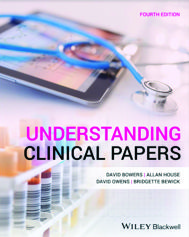 As we navigate the post pandemic world of vaccines and global health awareness, an understanding of clinical studies becomes relevant to all people, whether formally educated in research studies or not. The study of an idea/product/process on human subjects in a clinical trial is the final step before something is introduced into human society. This complex process is outlined in Understanding Clinical Papers written by both quantitative and qualitative experts in their respective clinical fields: David Bowers, Allan House, David Owens, and Bridgette Bewick.
As we navigate the post pandemic world of vaccines and global health awareness, an understanding of clinical studies becomes relevant to all people, whether formally educated in research studies or not. The study of an idea/product/process on human subjects in a clinical trial is the final step before something is introduced into human society. This complex process is outlined in Understanding Clinical Papers written by both quantitative and qualitative experts in their respective clinical fields: David Bowers, Allan House, David Owens, and Bridgette Bewick.
This book now in its fourth edition is a comprehensive, detailed account of how to read and understand both qualitative and quantitative clinical research. For anyone who wrote labs in school many of the headings and chapters will be familiar. The book’s unique characteristics arise from a collaboration between four researchers with different areas of clinical specialization. Since the first edition was published more than twenty years ago, the authors have added entire chapters in new statistical analyses for study results and qualitative research. Much of the initial setup and results analysis differs between qualitative and quantitative research, and it is noticeable to have both analyzed and even synthesized together in current clinical research projects.
The first half of Understanding Clinical Papers explains the study design, research subjects, results identification, and methods of measurement. Initially, a reader will check superficial outcomes of the study: Are the results significant, is it worth reading, is it relevant and is it ethical? How do the researchers layout their initial hypothesis—or if not investigating a hypothesis—is it clear what new ideas or questions they are trying to generate for the future? Throughout the text, the authors use an effective technique of illustrating a particular concept—a segment of a clinical paper is featured as a numbered table/figure with text bubbles and arrows. The text bubbles are connected with arrows to specific sections of the table/figure where the topic of interest is used in the clinical research. In this way, a relevant example of the featured topic is shown from current clinical literature.
The second half of the book covers results analysis and the complexities of statistical significance. In this section, some advanced knowledge of mathematics and statistics is helpful as the clinical data have often been subjected to a computerized statistical analysis. The authors sum up the confusion of interpreting statistical analysis in the statement, “If you have trouble figuring out what it tells you, do not worry: no-one else can do any better than you” (p. 162). This refers to the use of odds ratios to explain results used primarily for the mathematical properties that are beyond the book’s scope. Knowing this, the explanation of the p-value, a critical component of making results “significant” helps us understand just how complex statistical analysis really is, “How then do we decide what constitutes strong enough evidence against the hypothesis to enable us to reject it? The evidence we use is a probability, known as a p-value. The p-value is the probability of getting any particular outcome …when the hypothesis is true” (p. 182). Overall, the second half of the book outlines different clinical scenarios, their results analysis, and the interpretation of their p-values and derivatives.
Impressive that Bowers, et al, was able to incorporate such an all-encompassing topic in 273 pages plus an eight-page reference section and a nine-page index. It is detailed enough for an experienced researcher yet realistic for an ambitious, educated layperson wanting to better understand clinical research. A must-have for the shelves of health-care professionals and health-care enthusiasts of all levels.
Julie Kinyoun
Julie Kinyoun is an on-call chemistry instructor at various community colleges in Southern California. An avid reader, she enjoys reviewing books that help her become a better educator.


